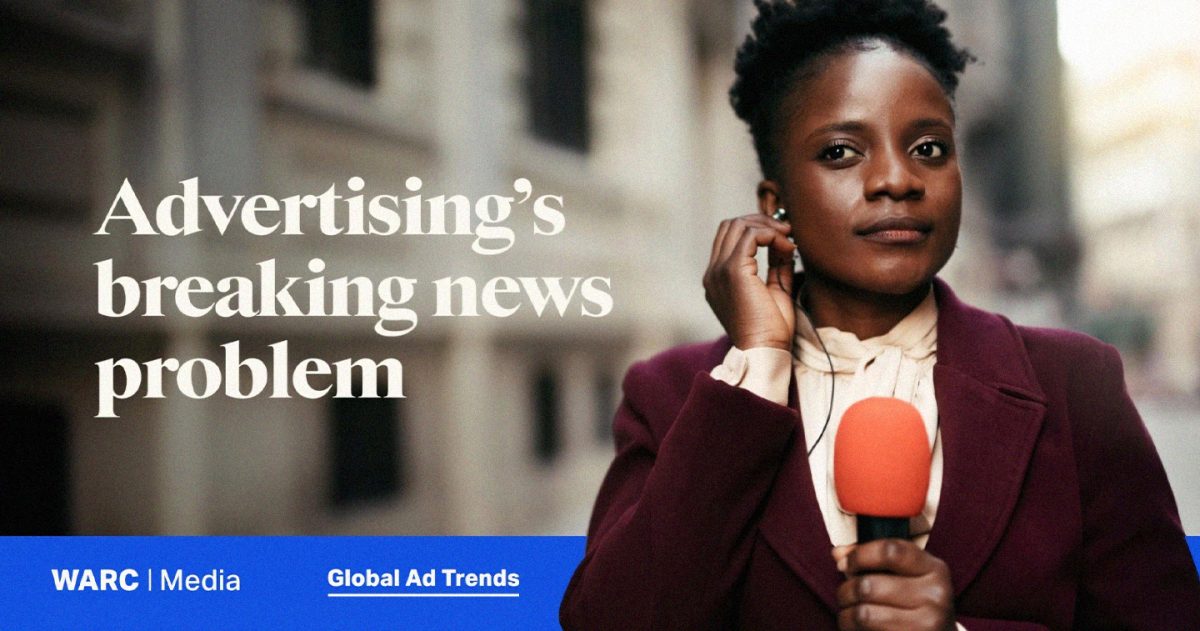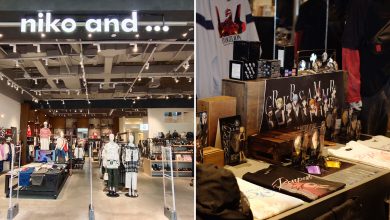LONDON, UK – The advertising industry has a breaking news problem. Today’s abundance of hard news stories – from trade wars to armed conflicts – draw audiences but not ad dollars to content publishers and broadcasters.
Globally, newsbrand ad spend is forecast to fall to $32.3bn this year, a 33.1% decrease from 2019, per WARC Media, and is forecast to remain flat through 2026. For magazine brands, spend is forecast at $3.7bn in 2025, a 38.6% slump since 2019.
Alongside content and safety concerns, brands are favouring global digital platforms like Google and Meta for targeted, scalable ads. Future growth hinges on first-party data, trusted environments, and revenue diversification beyond ads – such as subscriptions and direct consumer relationships.

WARC’s latest Global Ad Trends report examines the shift in advertising spend from professionally-produced content to user generated content (UGC) and ‘creator-journalists’ willing to operate within digital platform ecosystems. It explores how news publishers are tackling the decline in ad spend and how they plan to better demonstrate the role of professional journalism on advertising effectiveness.
Alex Brownsell, Head of Content, WARC Media, said: “Brands have become increasingly squeamish about hard news content. Keyword blocking hinders the ability of publishers to monetize newsworthy moments, while ad investment is increasingly shifting from professional journalism to ‘creator-journalists’. In this Global Ad Trends report we look at where the news media ad dollars are being allocated and what news brands are doing to combat these losses and win back advertisers.”
News media struggles as brands favor softer content
Ad spend on news content is falling across the board. Despite high audience interest, serious news stories are frequently demonetized due to keyword blocklists deployed by brands concerned by reputational risk. As brands avoid placing ads alongside content deemed controversial or distressing, they are favoring softer content like sport and lifestyle over “hard” news.
Only 3.7% (£177m) of total UK TV ad spend was allocated to news programming in 2024, per Nielsen. In the US, pharma brands have become increasingly integral for news broadcasters, accounting for 12% of national TV ad sales.
This evokes longstanding questions about the value of news as a content category, and whether brands should focus agnostically on targeting audiences.
User generated content set to overtake professional media in ad spend by 2026

The difficulties facing news media come at a time when advertisers increasingly favour user generated content (UGC) from influencers and creators, which offer low production costs, direct audience engagement, and alignment with platform algorithms.
Traditional media, which invests upfront in journalism and operates under stricter content standards and to tighter regulations, has struggled to compete. This shift is particularly damaging to the ad-funded news industry, which has long warned that shrinking investment in professional journalism risks a decline in civic literacy, and weaker defences against disinformation.
By next year, professionally produced content is forecast to account for less than half of content-driven ad spend, according to GroupM. Platforms like TikTok and podcasts are fuelling the rise of creator-journalists, as is the rise of AI-generated content which also accelerates this trend.
Kate Scott-Dawkins, Global President, Business Intelligence, GroupM, said: “As spend from the long tail of advertisers continues to outpace growth from the top 200, UGC is likely to dominate even more.”

Tech, healthcare and DTC brands drive digital spend shift in the US whilst India defies global trends as print media remains strong
Traditionally, the biggest business sectors advertising in US news media included automotive, retail, finance, and telecoms. With a broad reach and significant budgets, they relied heavily on print and local news to promote products and services at scale.
Over time, however, this mix has shifted. Automotive and retail spend moved toward digital and performance-based marketing. As news publishers adapt, they are increasingly targeting tech, healthcare and direct-to-consumer (DTC) brands and niche B2B advertisers seeking trusted environments.








